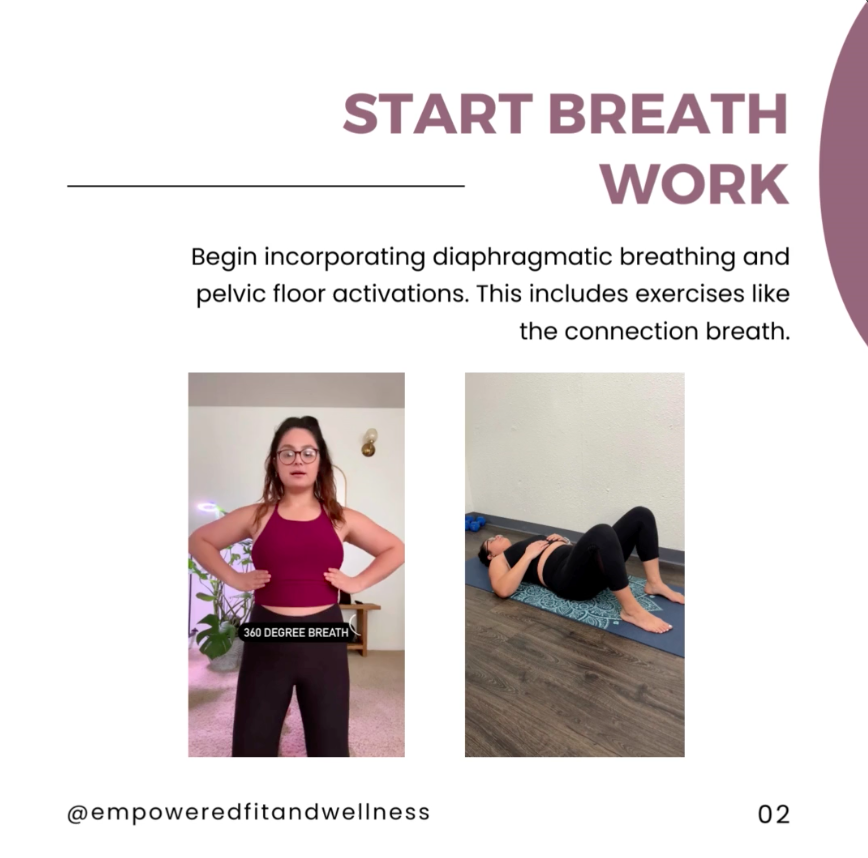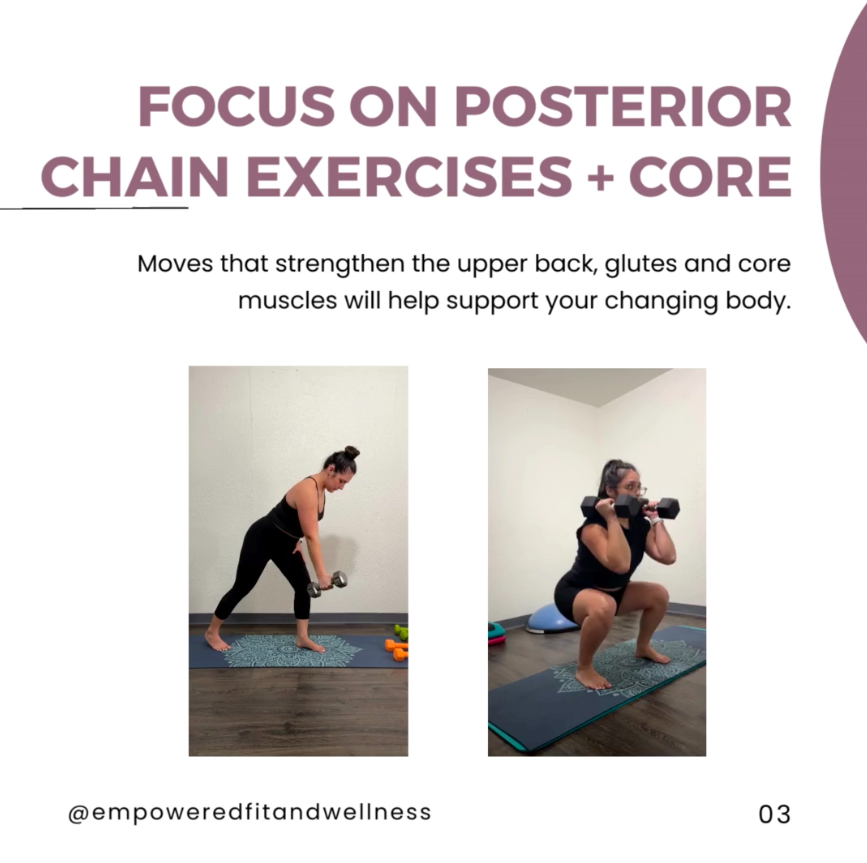Exercise during the first trimester
Exercise during the first trimester varies from person to person. You may be experiencing first trimester symptoms and exercise might be the last thing on your mind. If that is you, that’s okay. Let your focus be on rest.
If you’re feeling good and want to continue or start exercising, the tips in this post will help you get started.
Remember that exercise is not harmful to you or your baby. Continue to move your body when you can.
What you need to know about exercise during the first trimester
Minimal modifications are needed. After being cleared to exercise the focus during phase is to increase overall strength, preserve muscle mass, strengthen your core and create balance within your pelvic floor muscles.
Start incorporating breath work exercises. These include diaphragmatic breathing, piston exhales, pelvic floor contractions and the connection breath. Download my free deep core guide where I walk you through each exercise.
Focus on posterior chain exercises. These are moves that you’re probably already doing or have done in the past. Think squats, lunges, deadlifts, leg curs, back rows, rear fly’s, lat pull downs. All of these exercises are safe and a great way to support your body as it changes.
Core exercises are safe and beneficial to do. When performing core exercises the focus should be on managing pressure in your core, this means making sure that there is no abdominal coning or doming when you’re doing the exercise. Because everyone’s ability to manage pressure varies from person to person there is no set list of safe exercises. Where a full plank may work for one person, it doesn’t mean it will work for you. Instead of focusing on what exercise to do, I recommend you try any core exercise you’d like, pay attention to how your core responds and adjust from there. Check out this video (part 1 & part 2) where I explain how to know if an exercise is appropriate to continue or begin modify.
Monitor exercise intensity by the RPE chart (see picture). Instead of relying on your heart rate to determine your level of exertion, it is best to monitor your intensity from a scale of 1-10. Think of a 10 as needed to call for emergency help and 1 as sitting on the couch relaxing. Staying between a 3-7 is a good indicator of low to moderate intensity.





